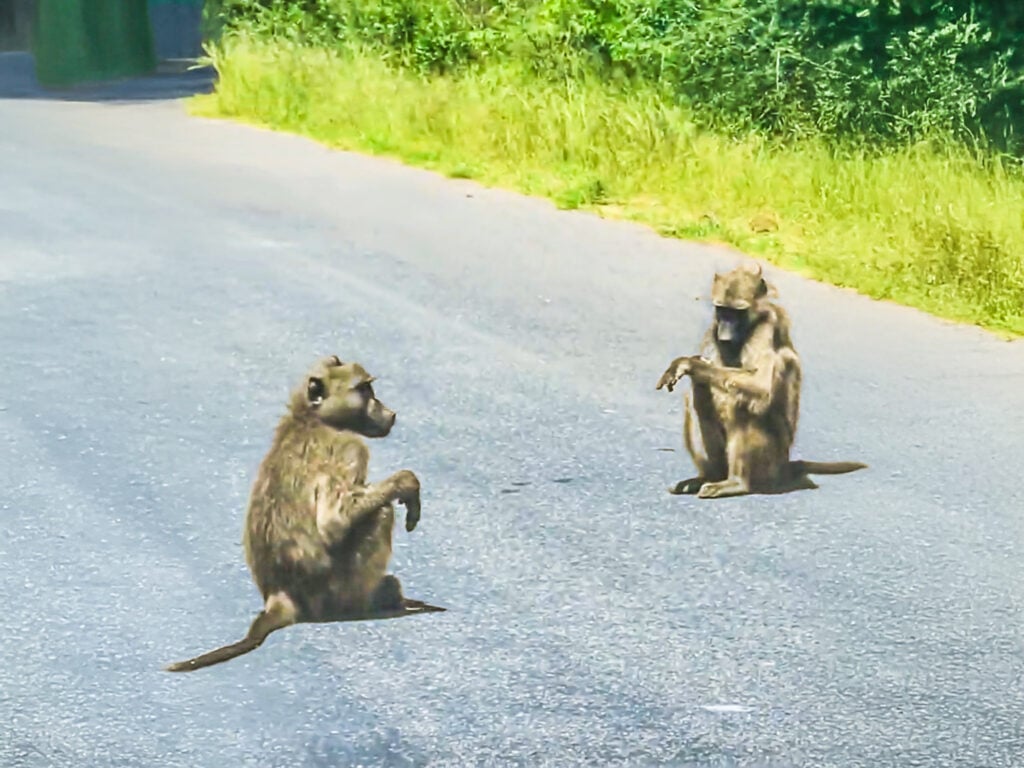
Barry Kramer sent this video to Latest Sightings. He filmed it while on a game drive in South Africa’s Kruger National Park.
Peaceful coexistence
Ordinarily, when different species forage together, there is a sense of peaceful coexistence. However, for some reason, on this occasion, things get tense.
As we join the action in Barry’s video, we see tensions rise between a flock of endangered ground hornbills and a troop of baboons.
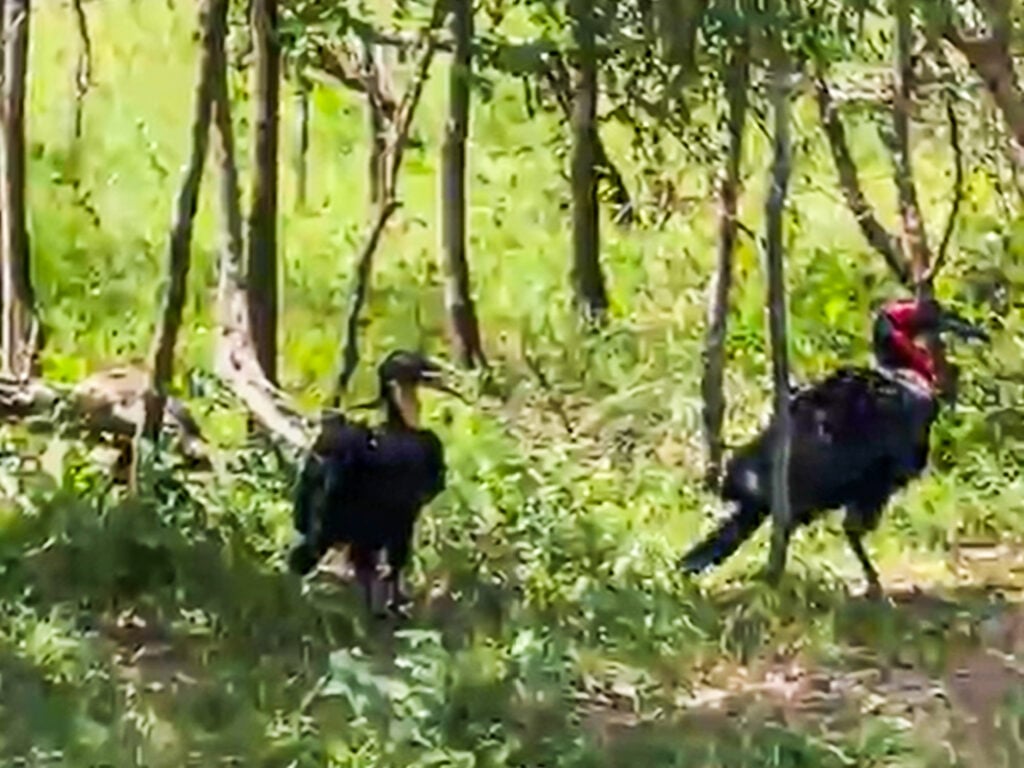
Old and new
To begin with, we see an adult and juvenile hornbill. The colour of the bare skin covering part of their neck and face differentiates them.
In adults, they are a vivid red colour, while in immature birds, they are pale yellow. The bird in the image below is the juvenile.
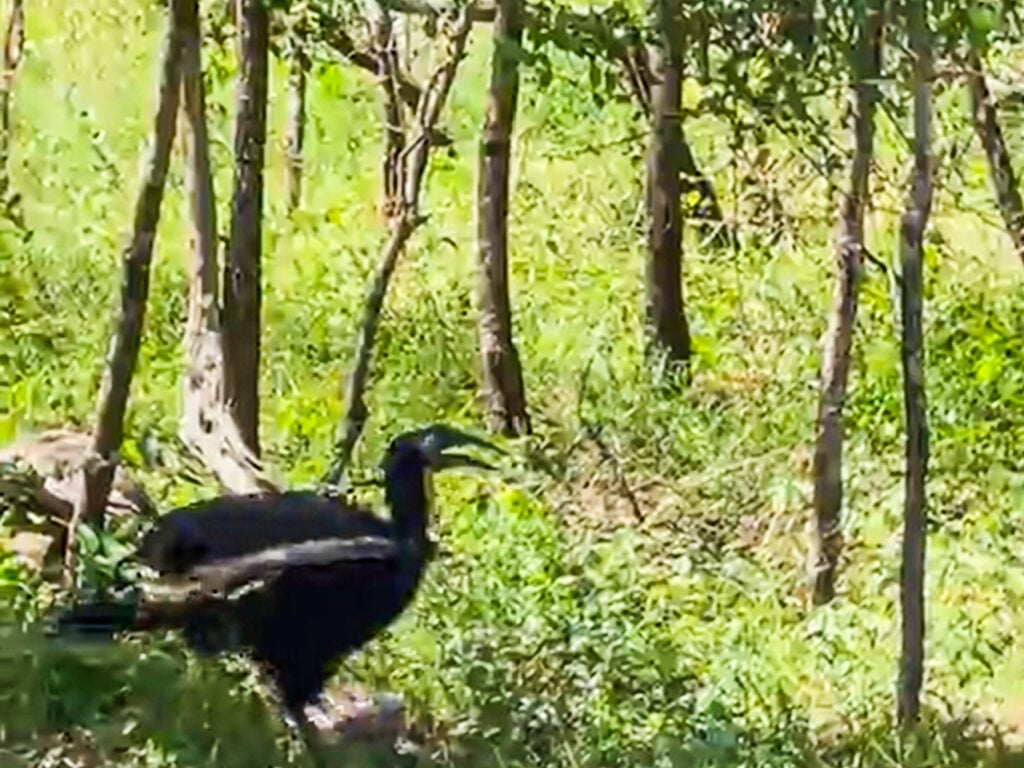
They are walking through the undergrowth in a stand of tambotie trees, looking for prey.
Unprovoked attack
Then, a young Chacma baboon is heard squealing. While the birds mind their own business, the baboon suddenly sets upon them.
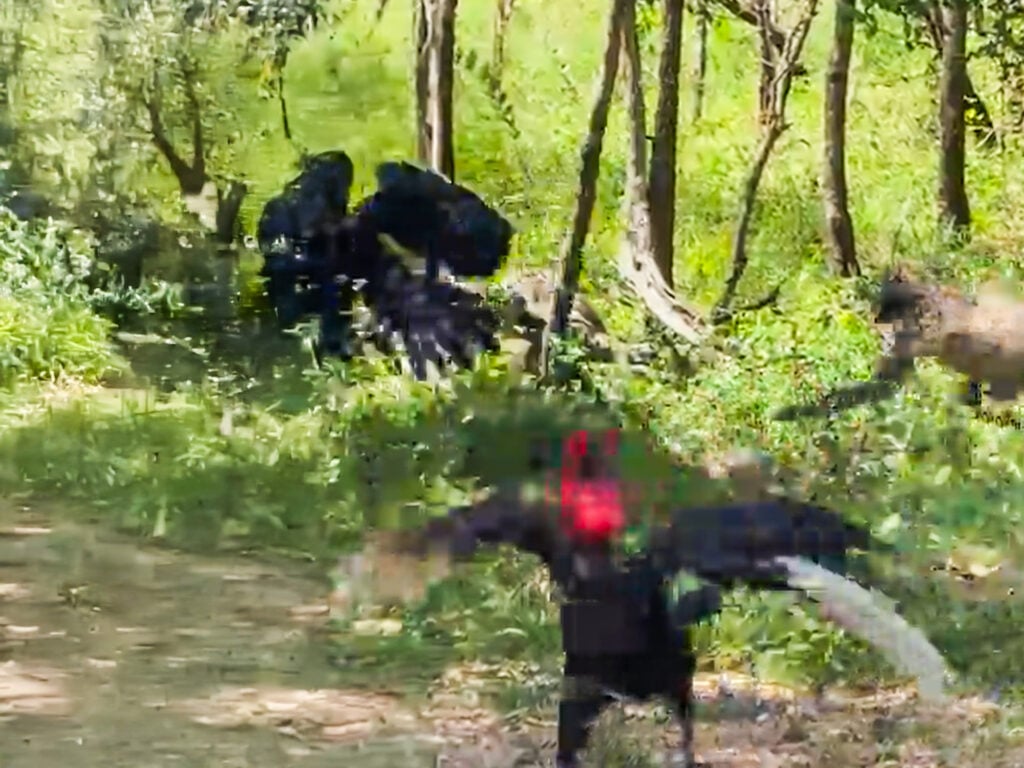
Surprised by the unwarranted provocation, the hornbills scatter in retreat. The young baboon, meanwhile, stands its ground.
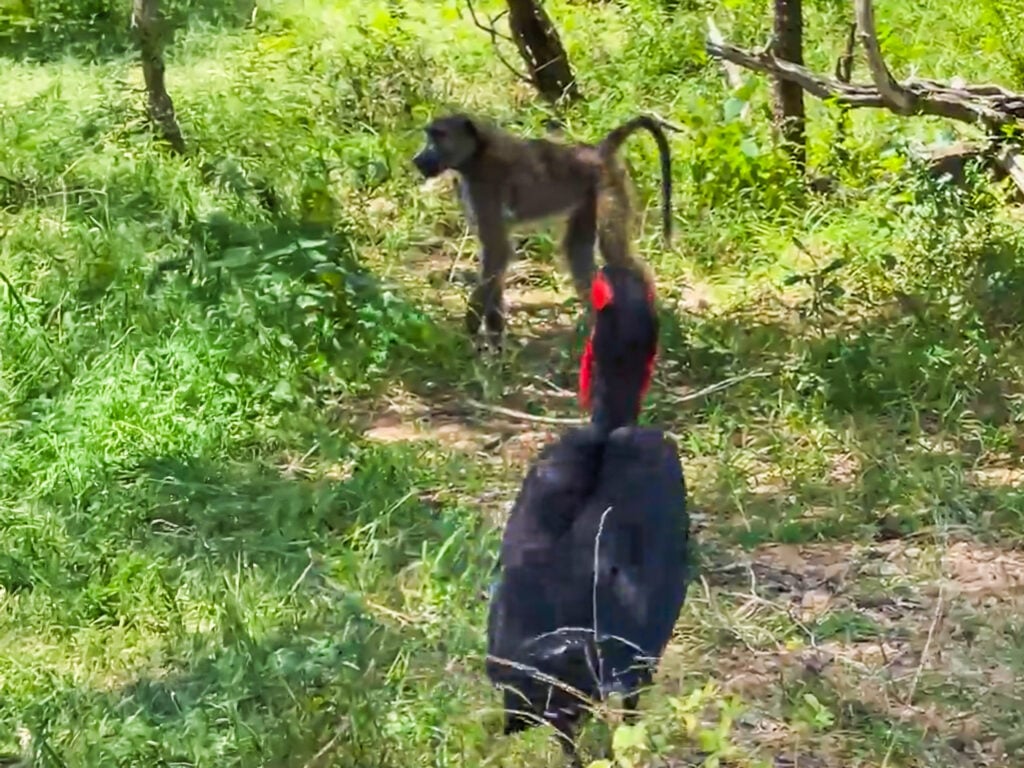
Reinforcements arrive
The young bird fled to another group of adult birds. Now, feeling safer in their company, the youngster returns towards where the baboon stands.
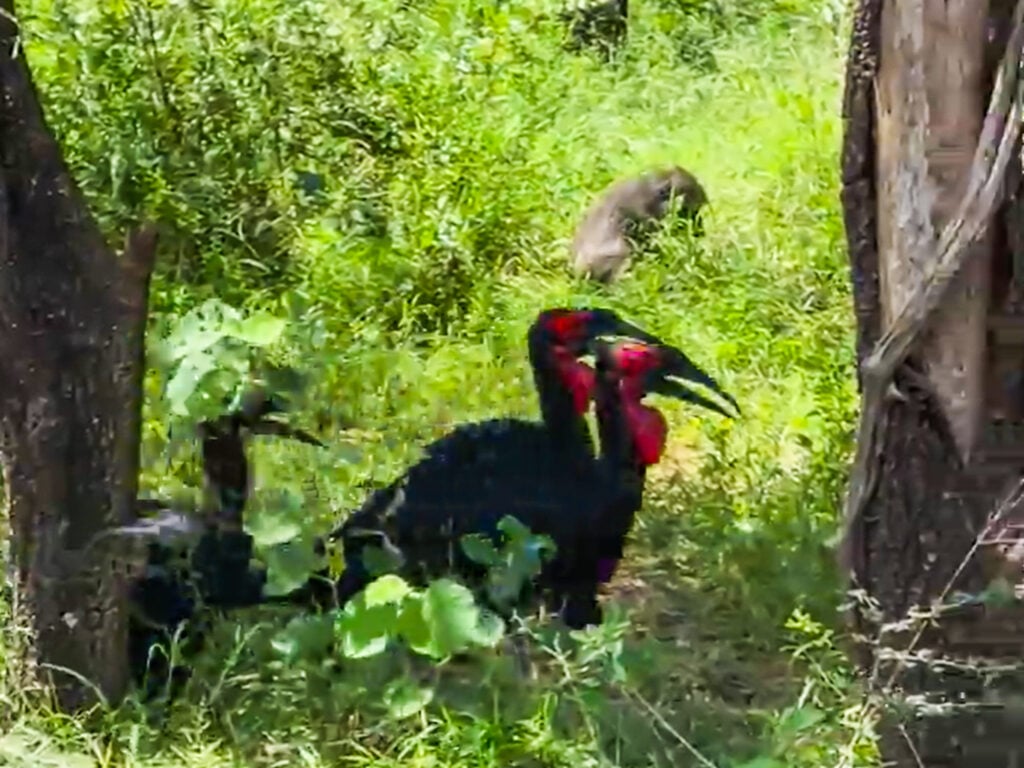
Counter-offensive
Standing shoulder to shoulder and presenting a row of sharp beaks, the hornbills present a formidable force. As they advance, the inexperienced baboons retreat.

Seeing this, the birds grow bolder and advance at speed. By now, the whole troop are aware of the unfolding drama, and we can hear several members screeching in alarm.
Anything you can do…
In response, the baboons gather together to show that they, too, can mount a united defence.
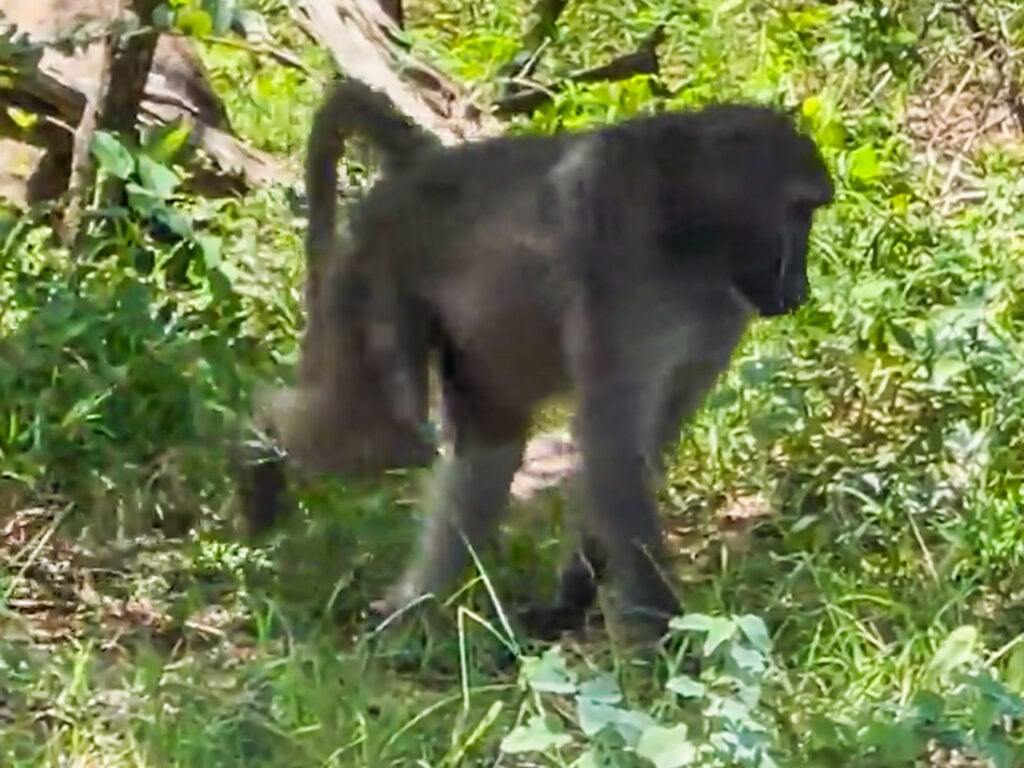
However, their advance is short-lived when, undeterred, the hornbills continue their broad offensive. Once again, the baboons retreat in a squealing mass.
From tension to truce
Subsequently, the tension subsides as the respective species return to foraging for food in the shady vegetation.
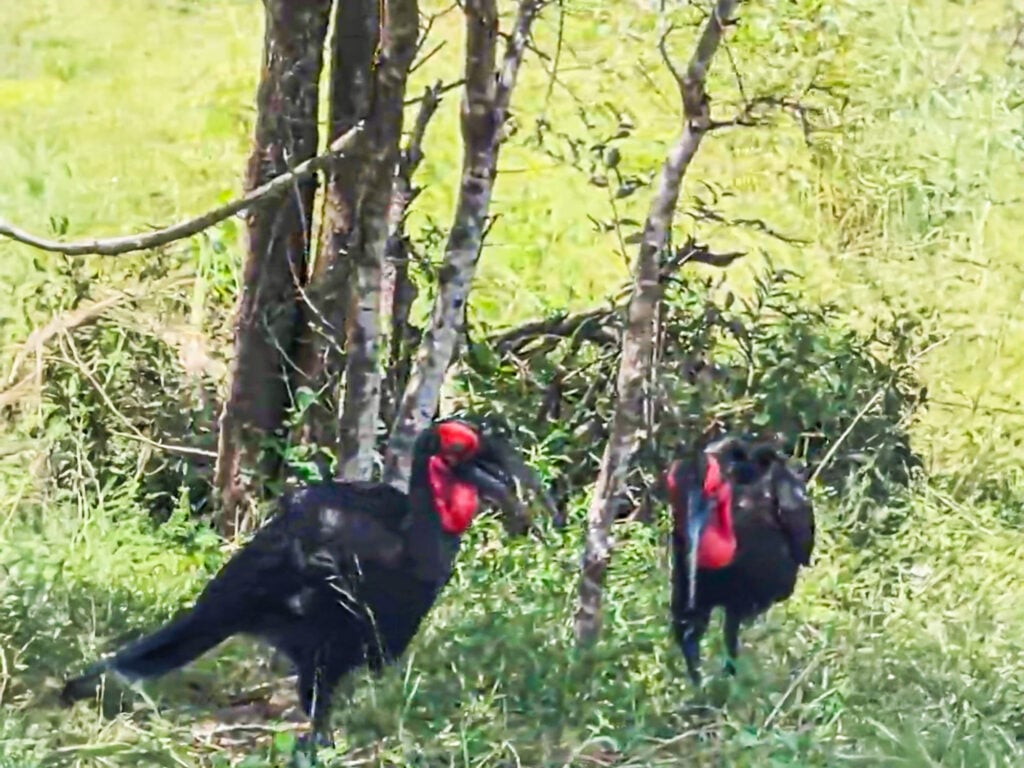
However, we can see that some of the baboons are not happy to let things stand between them and the hornbills.
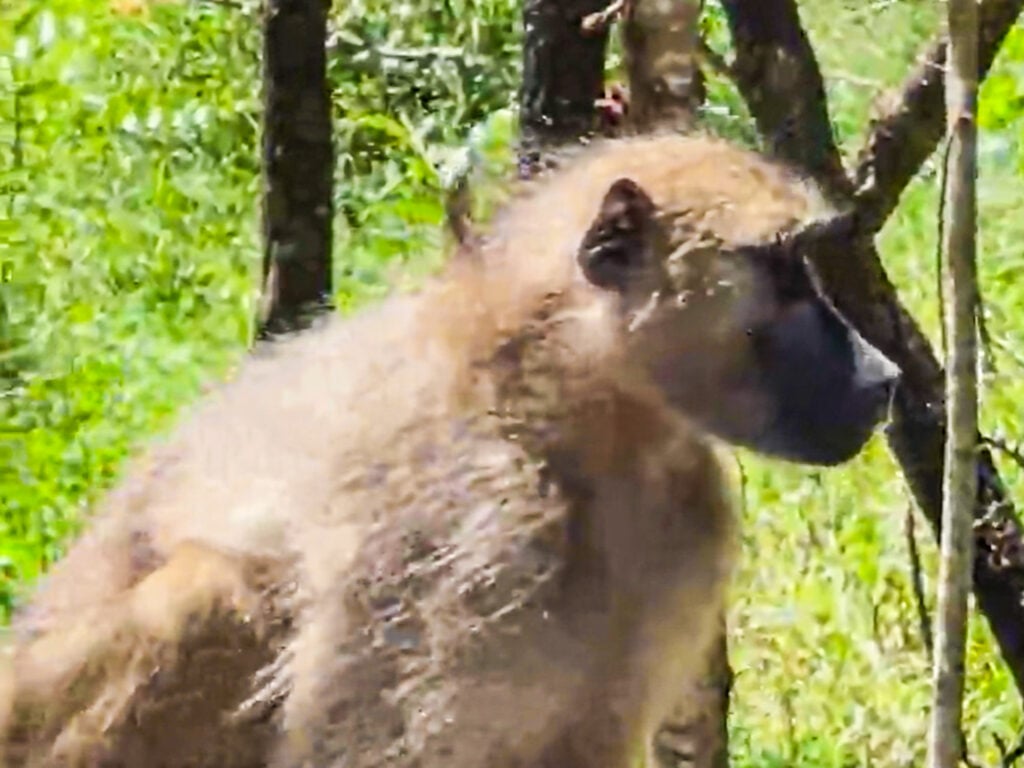
Renewed aggression repelled
Before long, a couple of young baboons again band together, determined to intimidate the birds. Still, the hornbills stand their ground and ready themselves to cross the road.
Get our Best Sightings as they Come in
As for the baboons, their confidence wavers, with some having to dash to stay clear of the belligerent birds.
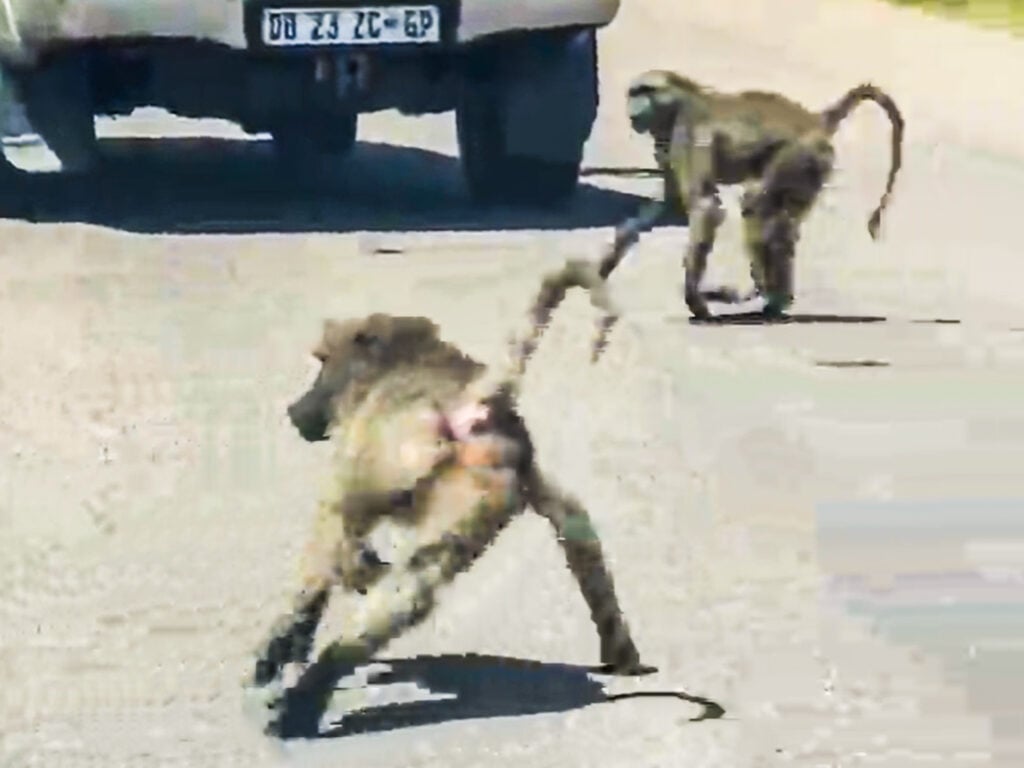
Some baboons still try to assert themselves, despite being repelled several times. So, as the hornbills cross the road, a couple of them launch another charge, this time from behind.
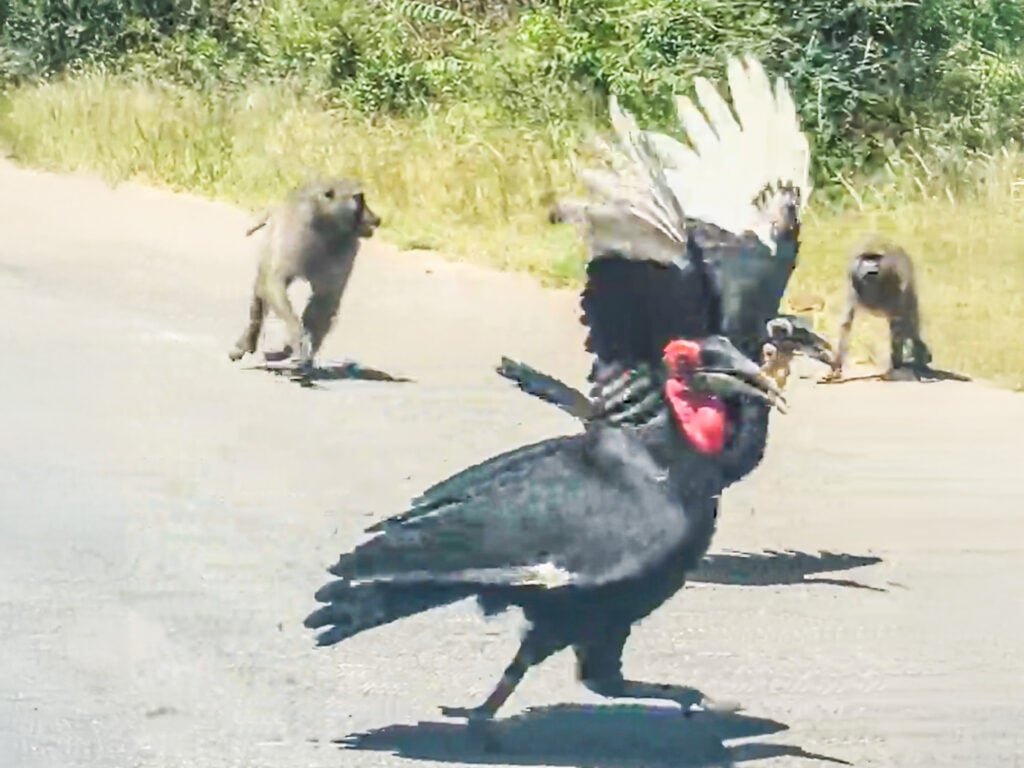
On this occasion, the baboons fluster the hornbills, prompting the young bird to briefly take flight to avoid the primates.
However, as they cross the road, it is as if they cross an imaginary boundary. While the birds continue on their way, the baboons retreat to the thicket and peace is restored.
Juvenile delinquents
What is noteworthy about this encounter, is that in both species actions, it is the youngsters that instigate the trouble.
This should be considered a normal part of their experiential development. By testing boundaries, species learn to recognise their place in the hierarchy, particularly as it relates to the collection of resources.
As they mature, both will realise the benefits of interspecies forage parties, the most important of which is their mutual security.
